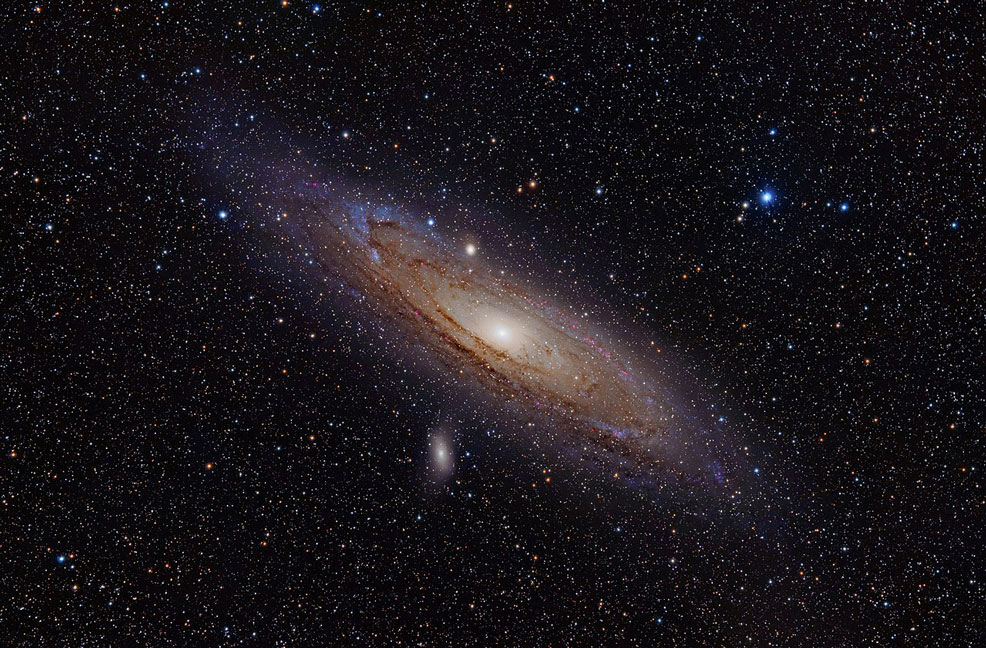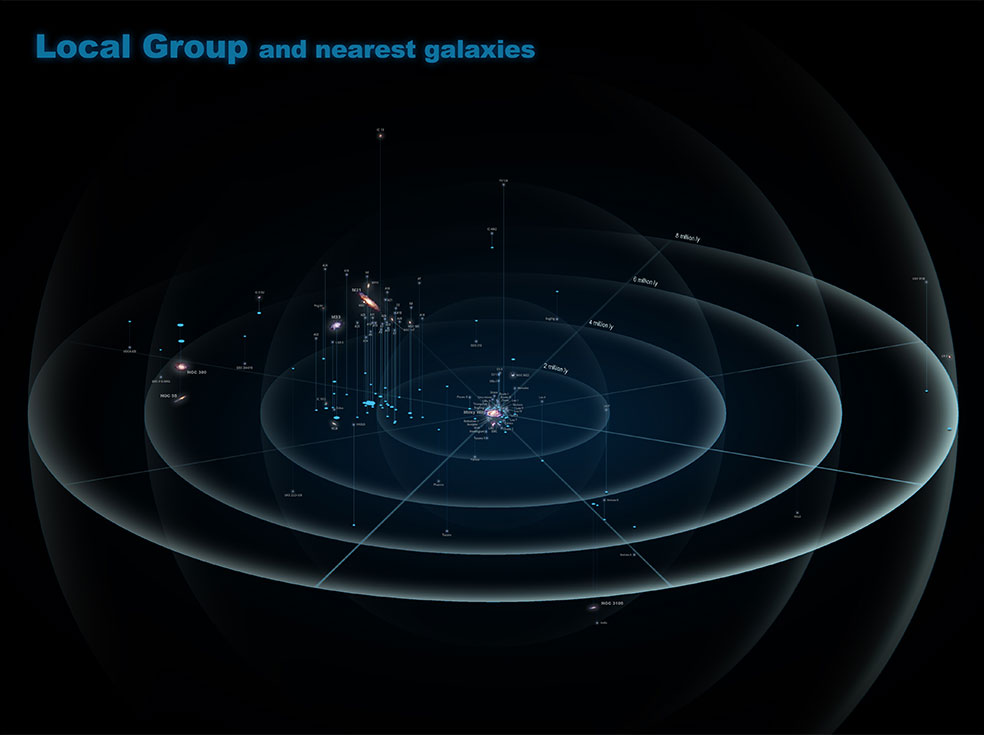
21st February 2018 Andromeda less massive than previously thought By studying the orbits of high-speed stars, researchers in Australia calculate that the Andromeda galaxy has only one-third as much dark matter as previously thought, making it similar in mass to the Milky Way.
Astronomers have discovered that our nearest galactic neighbour, Andromeda (M31), is roughly the same size as the Milky Way. It had been thought that Andromeda was two to three times bigger, and that our own galaxy would ultimately be engulfed by it. But new research, published in Monthly Notices of the Royal Astronomical Society, evens the score between the two galaxies. The weight of Andromeda is 800 billion times that of our Sun, according to astrophysicist Dr Prajwal Kafle, from the University of Western Australia node of the International Centre for Radio Astronomy Research. He and colleagues used a new technique to measure the speed required to escape a galaxy. "When a rocket is launched into space, it is thrown out with a speed of 11km/s to overcome the Earth's gravitational pull. Our home galaxy, the Milky Way, is over a trillion times heavier than our tiny planet Earth – so to escape its gravitational pull, we have to launch with a speed of 550km/s. We used this technique to tie down the mass of Andromeda," explains Kafle.
Click to enlarge
The research concludes that scientists previously overestimated the amount of dark matter in the Andromeda galaxy. "By examining the orbits of high speed stars, we discovered that this galaxy has far less dark matter than previously thought, and only a third of that uncovered in previous observations," says Kafle. Andromeda and the Milky Way are two giant spiral galaxies in our Local Group, and light takes 2.5 million years to travel between them. With Andromeda no longer considered the Milky Way's big brother, new simulations will be needed to determine when and how the two galaxies eventually collide. Dr Kafle used a similar technique to revise down the weight of the Milky Way in 2014, and says the latest finding has big implications for the understanding of our galactic neighbours: "It completely transforms our understanding of the Local Group. We had thought there was one biggest galaxy and our own Milky Way was slightly smaller, but that scenario has now completely changed. It's really exciting that we've been able to come up with a new method and suddenly 50 years of collective understanding of the Local Group has been turned on its head."
Comments »
If you enjoyed this article, please consider sharing it:
|








